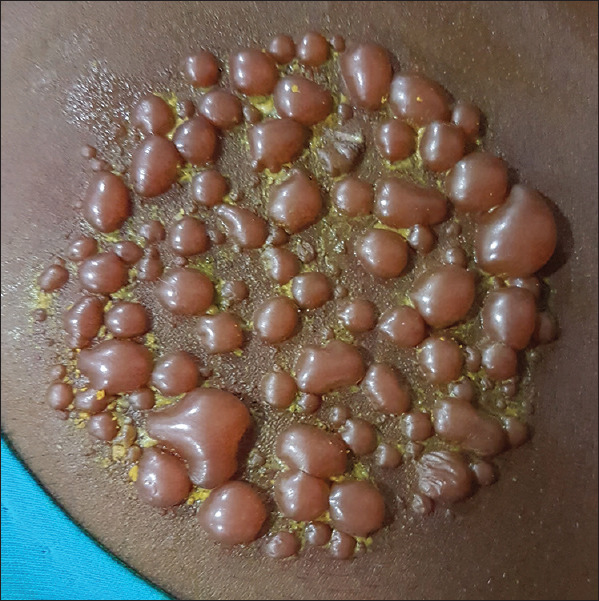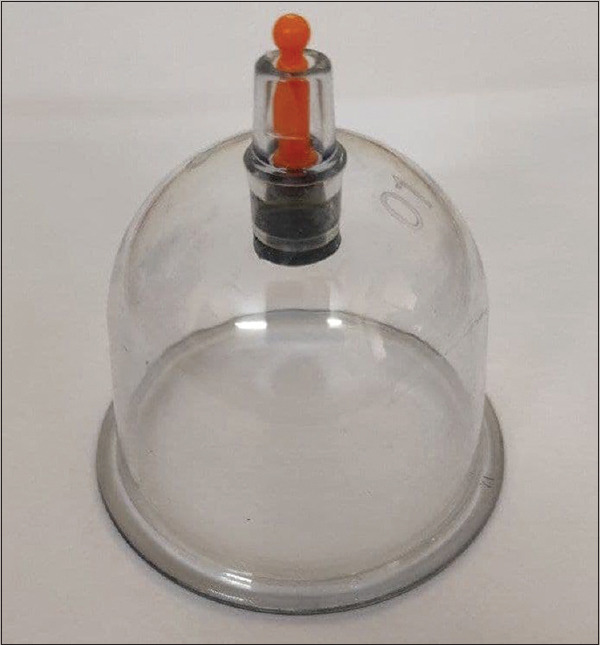A 25-year-old woman presented with multiple bullae over her left shoulder region of 1 day duration [Figure 1]. She had undergone “herbal cupping” therapy at the same site 2 days prior for backache. Definite history and typical clinical features led to the diagnosis of Hijama blister. As the bullae were causing her mild pain and discomfort, they were deroofed, and a course of oral antibiotics was prescribed. Cupping (Hijama in Arabic) has been used to treat chronic pain for centuries, in Egyptian and Chinese medicine.[1,2] The negative vacuum pressure underneath the cups placed at various acupuncture points is believed to cure the ailment through several mechanisms [Figure 2].[1,2] Longer suction time, higher pressure, and quackery have all increased the likelihood of pseudoscience therapy–related side effects as in our case.
Figure 1.

Multiple bullae and vesicles over the left shoulder region at the site of “herbal cupping” therapy
Figure 2.

Hijama cup
Declaration of patient consent
The authors certify that they have obtained all appropriate patient consent forms. In the form the patient(s) has/have given his/her/their consent for his/her/their images and other clinical information to be reported in the journal. The patients understand that their names and initials will not be published and due efforts will be made to conceal their identity, but anonymity cannot be guaranteed.
Financial support and sponsorship
Nil.
Conflicts of interest
There are no conflicts of interest.
References
- 1.Mohammad SH, Nil F, Jabeen A. Hijamah (cupping therapy): A noble method of treatment in unani medicine. Int J Res Ayurveda Pharm. 2015;6:207–15. [Google Scholar]
- 2.Vella KM, Lara-Corrales I, Rai BK, Kukreti V. Suction blisters. JAMA Dermatol. 2020;156:1248. doi: 10.1001/jamadermatol.2020.2675. [DOI] [PubMed] [Google Scholar]


